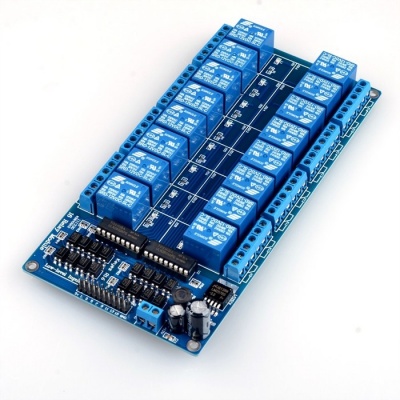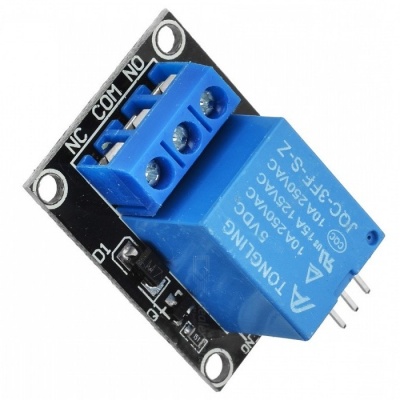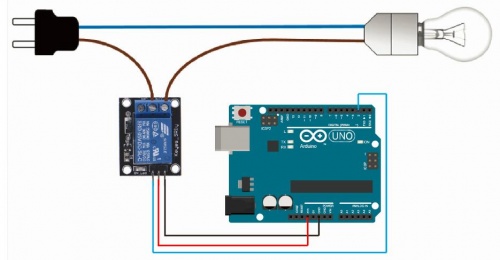How it's made
Physical computing
Basic electronics and circuits
Basic electronic components and sensors
Arduino introduction
all about microcontrollers
simple circuit and sketches
Sensors and Actuators
Sensing
Actuators with Adafruit Motor Shield
DC motor
push-pull solenoid
Servo motor
=Stepper motor
TIP 120 circuit
Relay Module
Introducing the Relay Module
A relay is an electrically operated switch. It means that it can be turned on or off, letting the current go through or not.
Controlling a relay with the Arduino is as simple as controlling an output such as an LED.
Notice the writing on the module terminals
COM: common pin
NO (Normally Open): there is no contact between the common pin and the normally open pin. So, when you trigger the relay, it connects to the COM pin, and supply is provided to a load
NC (Normally Closed): there is contact between the common pin and the normally closed pin. There is always a connection between the COM and NC pins, even when the relay is turned off. When you trigger the relay, the circuit is opened and there is no supply provided to a load.
If you want to control a lamp, for example, it is better to use a normally open circuit, because we just want to light up the lamp occasionally.
Wiring
it is very straightforward as you can see. But always double-check the relay module connections before you plug things together.
GND: goes to ground
VCC: goes to 5V
IN1: controls the relay (it is connected to an Arduino digital pin)
OK, but maybe you want to control more than one thing??
then no porblem
 here are 16 channels:)
The wiring is the same, you will just need 16 digital pins on the Arduino
here are 16 channels:)
The wiring is the same, you will just need 16 digital pins on the Arduino

